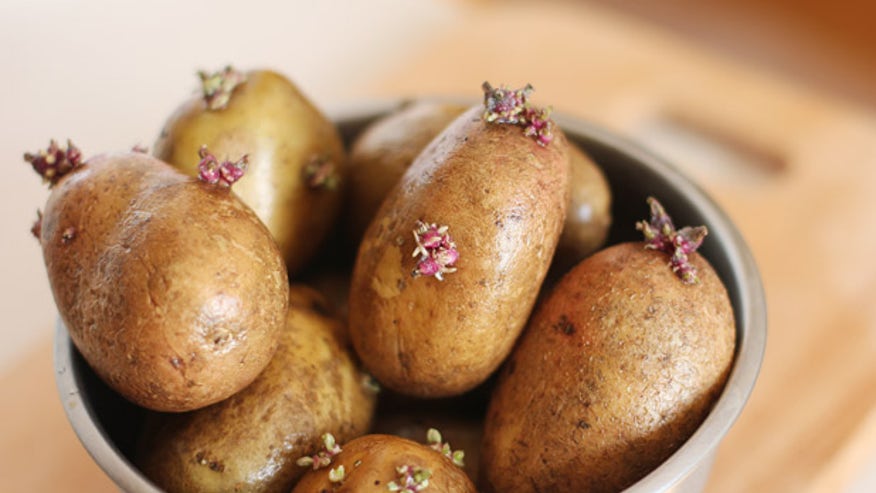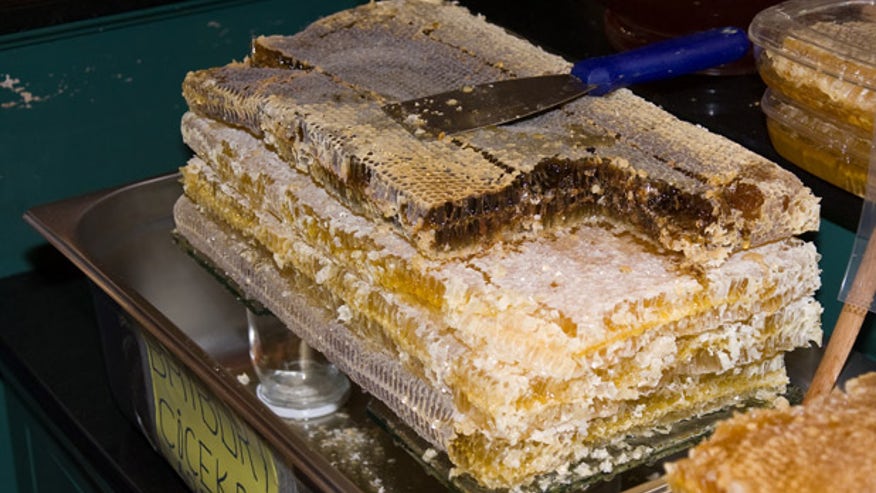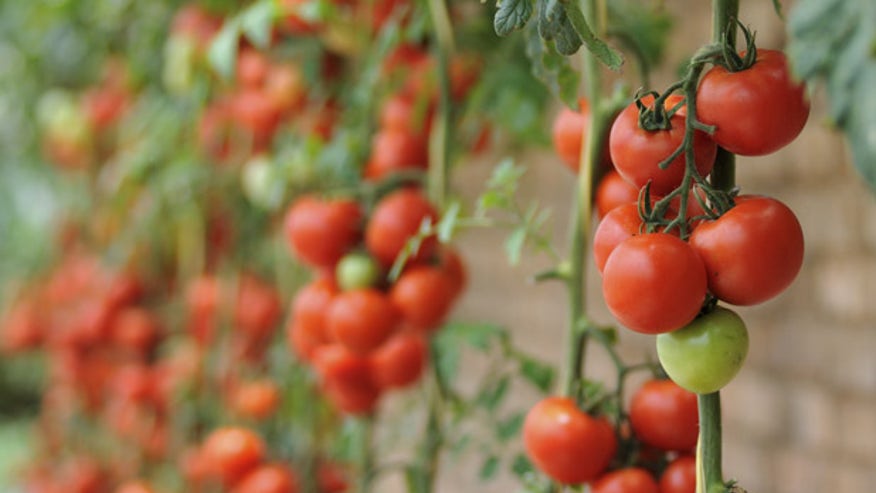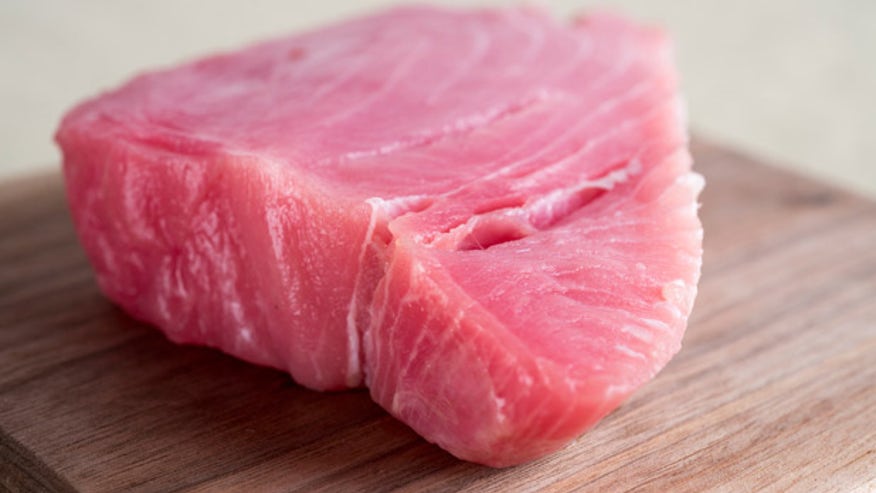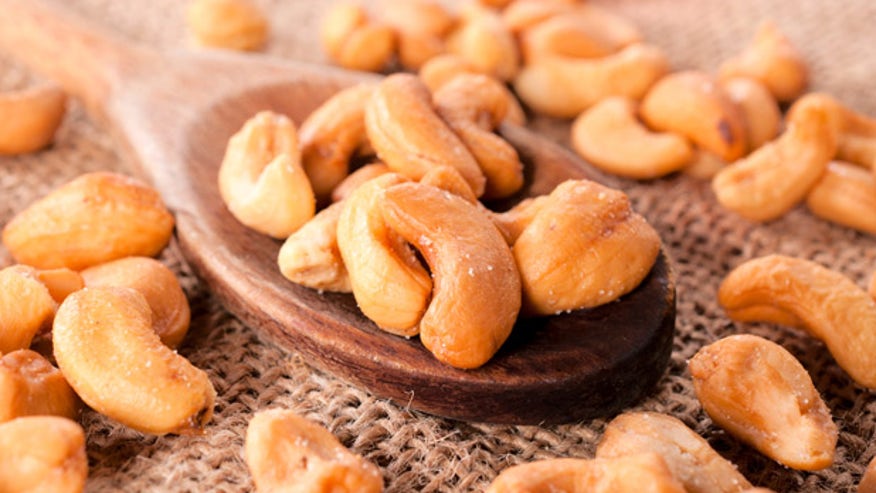Category: UFOs, Aliens
There is plenty of evidence of this hypothesis. Found on Earth are so many traces of radiation effects. In animals and humans occur causing mutations tsiklopizm (Cyclops in one eye is over the bridge). Legends of different peoples can learn about the existence of Cyclops fighting with people.
 Secondly, the radiation causes poliplodii - doubling the chromosome set, which causes gigantism and doubling of two hearts or two rows of teeth. Scientists on Earth periodically find remnants of giant skeletons with a double row of teeth. third area is radioactive mutagenesis Mon holoidal. Although now this race in the world - the most common, but previously Mongoloids was much more - they met in Europe and in Sumeria and Egypt and even in Central Africa. Another confirmation radioactive mutagenesis - the birth of children with freaks and atavism ( return to the ancestors). Radiation leads to a six-toed, which occurs in the Japanese survivors of the U.S. nuclear bombardment, as well as neonatal Chernobyl. On Earth, found more than a hundred craters with a diameter of 2-3 kilometers, among which there are two huge: in South America (diameter - 40 km) and South Africa (diameter - 120 km). If they were formed in the Paleozoic era (350 million years ago), then from them for a long time would be nothing left, because the thickness of the upper layer of the Earth increases by about a meter in a hundred years. A funnel is still intact. This suggests that a nuclear attack occurred 25-35 thousand years ago. Taking 100 funnels for 3 km, we find that the war with the Asuras were detonated bombs 5000 Mt. These facts confirm that the nuclear war. The fire burned for "three days and three nights" (as the story "Code Rio" Mayans) and resulted in a nuclear rain - where no bombs fell, struck radiation. Another terrible phenomenon caused by radiation - light body burns. They explained that the shock wave propagates not only along the ground, but also upwards. Reaching the stratosphere, it destroys the ozone layer protecting Earth from harmful ultraviolet radiation. UV is known to burn exposed skin. Nuclear explosions resulted in a significant decrease in pressure and gas composition of the atmosphere poisoning, killing the survivors. Asuras tried to escape from death in their underground cities, but showers and earthquakes destroyed the shelter and drove away the inhabitants on the ground again. Previously, scientists believed that acting in our time "pipe" coming from the caves to the surface, are of natural origin. In fact, they are made with a laser weapon for burning Asuras, who had taken refuge in the dungeons. These "pipes" have the correct rounded shape, which is alien to the funnels of natural origin (many of them in the caves of the Perm region, including in the vicinity of Kungur.) Now I understand why throughout the world to dig tunnels thousands of kilometers in length, found in the Altai , Urals, Tien Shan, Caucasus, in the deserts of the Sahara and Gobi in North and South America. Perhaps lasers were used not only for burning the asuras. Once the laser beam reaches the underground layer of molten, magma erupted, forming volcanoes eventually artificial origin. remaining in the cave gradually lost sight (everyone knows about the epic SVYATOGOR whose father lived in a cave and did not come to the surface, as blind). Descendants asuras reduced in size to dwarfs, about which there are many legends. Stunted creatures survived to this day, and have not only black but also white skin (menehety Guinea nationality dopa and cad, rising slightly more than a meter living in Tibet). Nearby Sterlitimak from (city in Bashkiria) are two of the dune minerals . This is probably two graves asuras; like so many graves in the world. But some asuras survived to this day. The commission on anomalous phenomena in the 70s there were reports of meetings with the Giants rise 40-storey building. These steps were accompanied by strong roar of the Titans, and their feet sank deep into the ground. Regarding life underground, it is possible. According to geologists, under water than in all the oceans, there are found underground seas, lakes and rivers. Scientists have suggested that the water of the oceans associated with underground and is not only the water cycle between them, but also the exchange of biological species. To underground biosphere was self-sufficient, there should be plants that produce oxygen and carbon dioxide decomposing. But photosynthesis, it turns out, can also occur in complete darkness, you just miss out on the ground weak electrical current of a certain frequency. In places of the earth's surface were detected heat thermal life forms that do not need light. Perhaps they can be both unicellular and multicellular, and even to achieve a high level of development. emergence of dinosaurs on Earth (eg, the Loch Ness Monster) said that living underground creatures sometimes come to the surface, "graze". Many times asurskoy creatures floating biosphere may have found salvation is underground. Messages about dinosaurs that appear in the oceans, seas and lakes - evidence of penetrating the dungeon creatures who have found refuge there. According to the Vedas, the asuras were big and strong, but they ruined the credulity and simplicity. Gods won by fraud asuras and herded them into the ground and the bottom of the oceans. Pyramids scattered across the planet (in Egypt, Mexico, Tibet, India) suggested that culture was a single, and the earthlings had no reason to war with each other. Those whom the Vedas are called gods, appeared from the sky, it's aliens from outer space, and nuclear conflict was likely space. 25 thousand years ago, the world was a nuclear war seems old Darwin theory, according to which our ancestors were monkeys, losing its way. Not so long ago completed the largest in the last five years a joint research project of NASA scientists and French scientists. And finally prepared him for the report was full of unexpected facts showing that 25,000 years ago the Earth experienced a global nuclear war! across our planet researchers have found more than 100 craters left by a powerful explosion incredibly distant time. The deepest of them - 120-kilometer - is in South Africa. That analysis of its walls - or rather, layers of the earth in them, and was calculated date of the grand catastrophe. Managed scientists identify and nuclear strike force: more than 500 thousand tons of TNT. For comparison: the bombing of Hiroshima estimated 20 thousand. Now imagine how powerful was the ancient attack, unless it is at the calculations of scientists, could change the Earth's rotation around its axis! This was due to the fact that the huge mass of water of the oceans that covered the planet, resulting in shock began to move - get something like a giant whirlpool. His strength and "spurred" the Earth, causing it to spin faster. During the last century in the Mayan sites of ancient calendars were found, which were equal to 36 hours of night. Scientists believe that this was the duration of the earth and the light of the day to a nuclear war. Moreover, in the genetic memory of modern humans yet this information is stored. Experiments physiologists have shown that if a person is placed in a dungeon and make it impossible to know the current time, his body is reconstructed on a rhythm of life in a day if not the usual 24, and many more - 36 hours. Evidence of heavy-duty nuclear catastrophe ancient times, According to experts, found in ancient legends and epics of many nations. If we translate the myths about African Pygmy "big fire came down from heaven," dropping metaphors, you get a completely reliable chronicle of the explosion and its aftermath - a nuclear winter. And the world-famous "Ma-habharate" describes in some detail how to save those who survived nuclear slaughter 25 thousand years old. From the destructive fire people went into the ground, pulling out its first ever air raid shelters. Similar underground galleries have the Altai and the Urals, Tien Shan and in the Sahara, in the Perm region and South America. Man-made origin of these catacombs becomes obvious even to the layman, we need only compare them to the "natural" natural. At first - the correct proportional parameters, the second - is disproportionate and unsystematic. One of the inevitable consequences of a nuclear catastrophe is the mutation of living organisms. Radioactive mutagenesis rebuilds human chromosome chain, resulting in radically changing its appearance. But deceit is that different people exposed to radiation chromosomal series change their usual structure and then formed differently. writes the weekly "Windows", our ancestors did not escape this fate.Shortly after the explosion of global human society is a veritable "piggy mutants." Among them, for example, were the winged people and the Giants - their skeletons are still found during the excavations, and dwarfs, whose direct descendants are the modern pygmies in Africa and nationalities dopa and cad from Tibet. Some of these branches are dying, unable to adapt to the environment. Others were cruelly exterminated rivals covet their territory. Scientists believe that the ancient people had a third eye - about the level of the nose, and in our time the genetic memory of the body gives people an incredibly sharp intuition. But the most typical effects of radiation exposure are tsiklopizm and Mongoloid, and in the end it is the Cyclops and the Mongolians have become major competitors in the struggle for survival. Mongolians won: survive with two eyes was easier than with one. Until now, their race is the most common in the world, and the characteristics of Mongoloid regularly occur in representatives of the other modern human races. According to experts, it says that the process of mutation, albeit very slowly, but still continues. So, 25,000 years ago, our planet has turned into a giant Chernobyl, and we - modern humans - are the descendants of mutants that have resulted the catastrophe. All this follows from the US-French study, from which, however, not clear what were the motives of a distant nuclear war, and who, indeed, was the instigator of the bombing. Scientists casually mentioned that existed at the time of mighty civilizations, has the technology, the secrets are not known hitherto. But, experts say, to collect information about them - this is a new project. It will begin this autumn.
Secondly, the radiation causes poliplodii - doubling the chromosome set, which causes gigantism and doubling of two hearts or two rows of teeth. Scientists on Earth periodically find remnants of giant skeletons with a double row of teeth. third area is radioactive mutagenesis Mon holoidal. Although now this race in the world - the most common, but previously Mongoloids was much more - they met in Europe and in Sumeria and Egypt and even in Central Africa. Another confirmation radioactive mutagenesis - the birth of children with freaks and atavism ( return to the ancestors). Radiation leads to a six-toed, which occurs in the Japanese survivors of the U.S. nuclear bombardment, as well as neonatal Chernobyl. On Earth, found more than a hundred craters with a diameter of 2-3 kilometers, among which there are two huge: in South America (diameter - 40 km) and South Africa (diameter - 120 km). If they were formed in the Paleozoic era (350 million years ago), then from them for a long time would be nothing left, because the thickness of the upper layer of the Earth increases by about a meter in a hundred years. A funnel is still intact. This suggests that a nuclear attack occurred 25-35 thousand years ago. Taking 100 funnels for 3 km, we find that the war with the Asuras were detonated bombs 5000 Mt. These facts confirm that the nuclear war. The fire burned for "three days and three nights" (as the story "Code Rio" Mayans) and resulted in a nuclear rain - where no bombs fell, struck radiation. Another terrible phenomenon caused by radiation - light body burns. They explained that the shock wave propagates not only along the ground, but also upwards. Reaching the stratosphere, it destroys the ozone layer protecting Earth from harmful ultraviolet radiation. UV is known to burn exposed skin. Nuclear explosions resulted in a significant decrease in pressure and gas composition of the atmosphere poisoning, killing the survivors. Asuras tried to escape from death in their underground cities, but showers and earthquakes destroyed the shelter and drove away the inhabitants on the ground again. Previously, scientists believed that acting in our time "pipe" coming from the caves to the surface, are of natural origin. In fact, they are made with a laser weapon for burning Asuras, who had taken refuge in the dungeons. These "pipes" have the correct rounded shape, which is alien to the funnels of natural origin (many of them in the caves of the Perm region, including in the vicinity of Kungur.) Now I understand why throughout the world to dig tunnels thousands of kilometers in length, found in the Altai , Urals, Tien Shan, Caucasus, in the deserts of the Sahara and Gobi in North and South America. Perhaps lasers were used not only for burning the asuras. Once the laser beam reaches the underground layer of molten, magma erupted, forming volcanoes eventually artificial origin. remaining in the cave gradually lost sight (everyone knows about the epic SVYATOGOR whose father lived in a cave and did not come to the surface, as blind). Descendants asuras reduced in size to dwarfs, about which there are many legends. Stunted creatures survived to this day, and have not only black but also white skin (menehety Guinea nationality dopa and cad, rising slightly more than a meter living in Tibet). Nearby Sterlitimak from (city in Bashkiria) are two of the dune minerals . This is probably two graves asuras; like so many graves in the world. But some asuras survived to this day. The commission on anomalous phenomena in the 70s there were reports of meetings with the Giants rise 40-storey building. These steps were accompanied by strong roar of the Titans, and their feet sank deep into the ground. Regarding life underground, it is possible. According to geologists, under water than in all the oceans, there are found underground seas, lakes and rivers. Scientists have suggested that the water of the oceans associated with underground and is not only the water cycle between them, but also the exchange of biological species. To underground biosphere was self-sufficient, there should be plants that produce oxygen and carbon dioxide decomposing. But photosynthesis, it turns out, can also occur in complete darkness, you just miss out on the ground weak electrical current of a certain frequency. In places of the earth's surface were detected heat thermal life forms that do not need light. Perhaps they can be both unicellular and multicellular, and even to achieve a high level of development. emergence of dinosaurs on Earth (eg, the Loch Ness Monster) said that living underground creatures sometimes come to the surface, "graze". Many times asurskoy creatures floating biosphere may have found salvation is underground. Messages about dinosaurs that appear in the oceans, seas and lakes - evidence of penetrating the dungeon creatures who have found refuge there. According to the Vedas, the asuras were big and strong, but they ruined the credulity and simplicity. Gods won by fraud asuras and herded them into the ground and the bottom of the oceans. Pyramids scattered across the planet (in Egypt, Mexico, Tibet, India) suggested that culture was a single, and the earthlings had no reason to war with each other. Those whom the Vedas are called gods, appeared from the sky, it's aliens from outer space, and nuclear conflict was likely space. 25 thousand years ago, the world was a nuclear war seems old Darwin theory, according to which our ancestors were monkeys, losing its way. Not so long ago completed the largest in the last five years a joint research project of NASA scientists and French scientists. And finally prepared him for the report was full of unexpected facts showing that 25,000 years ago the Earth experienced a global nuclear war! across our planet researchers have found more than 100 craters left by a powerful explosion incredibly distant time. The deepest of them - 120-kilometer - is in South Africa. That analysis of its walls - or rather, layers of the earth in them, and was calculated date of the grand catastrophe. Managed scientists identify and nuclear strike force: more than 500 thousand tons of TNT. For comparison: the bombing of Hiroshima estimated 20 thousand. Now imagine how powerful was the ancient attack, unless it is at the calculations of scientists, could change the Earth's rotation around its axis! This was due to the fact that the huge mass of water of the oceans that covered the planet, resulting in shock began to move - get something like a giant whirlpool. His strength and "spurred" the Earth, causing it to spin faster. During the last century in the Mayan sites of ancient calendars were found, which were equal to 36 hours of night. Scientists believe that this was the duration of the earth and the light of the day to a nuclear war. Moreover, in the genetic memory of modern humans yet this information is stored. Experiments physiologists have shown that if a person is placed in a dungeon and make it impossible to know the current time, his body is reconstructed on a rhythm of life in a day if not the usual 24, and many more - 36 hours. Evidence of heavy-duty nuclear catastrophe ancient times, According to experts, found in ancient legends and epics of many nations. If we translate the myths about African Pygmy "big fire came down from heaven," dropping metaphors, you get a completely reliable chronicle of the explosion and its aftermath - a nuclear winter. And the world-famous "Ma-habharate" describes in some detail how to save those who survived nuclear slaughter 25 thousand years old. From the destructive fire people went into the ground, pulling out its first ever air raid shelters. Similar underground galleries have the Altai and the Urals, Tien Shan and in the Sahara, in the Perm region and South America. Man-made origin of these catacombs becomes obvious even to the layman, we need only compare them to the "natural" natural. At first - the correct proportional parameters, the second - is disproportionate and unsystematic. One of the inevitable consequences of a nuclear catastrophe is the mutation of living organisms. Radioactive mutagenesis rebuilds human chromosome chain, resulting in radically changing its appearance. But deceit is that different people exposed to radiation chromosomal series change their usual structure and then formed differently. writes the weekly "Windows", our ancestors did not escape this fate.Shortly after the explosion of global human society is a veritable "piggy mutants." Among them, for example, were the winged people and the Giants - their skeletons are still found during the excavations, and dwarfs, whose direct descendants are the modern pygmies in Africa and nationalities dopa and cad from Tibet. Some of these branches are dying, unable to adapt to the environment. Others were cruelly exterminated rivals covet their territory. Scientists believe that the ancient people had a third eye - about the level of the nose, and in our time the genetic memory of the body gives people an incredibly sharp intuition. But the most typical effects of radiation exposure are tsiklopizm and Mongoloid, and in the end it is the Cyclops and the Mongolians have become major competitors in the struggle for survival. Mongolians won: survive with two eyes was easier than with one. Until now, their race is the most common in the world, and the characteristics of Mongoloid regularly occur in representatives of the other modern human races. According to experts, it says that the process of mutation, albeit very slowly, but still continues. So, 25,000 years ago, our planet has turned into a giant Chernobyl, and we - modern humans - are the descendants of mutants that have resulted the catastrophe. All this follows from the US-French study, from which, however, not clear what were the motives of a distant nuclear war, and who, indeed, was the instigator of the bombing. Scientists casually mentioned that existed at the time of mighty civilizations, has the technology, the secrets are not known hitherto. But, experts say, to collect information about them - this is a new project. It will begin this autumn.







